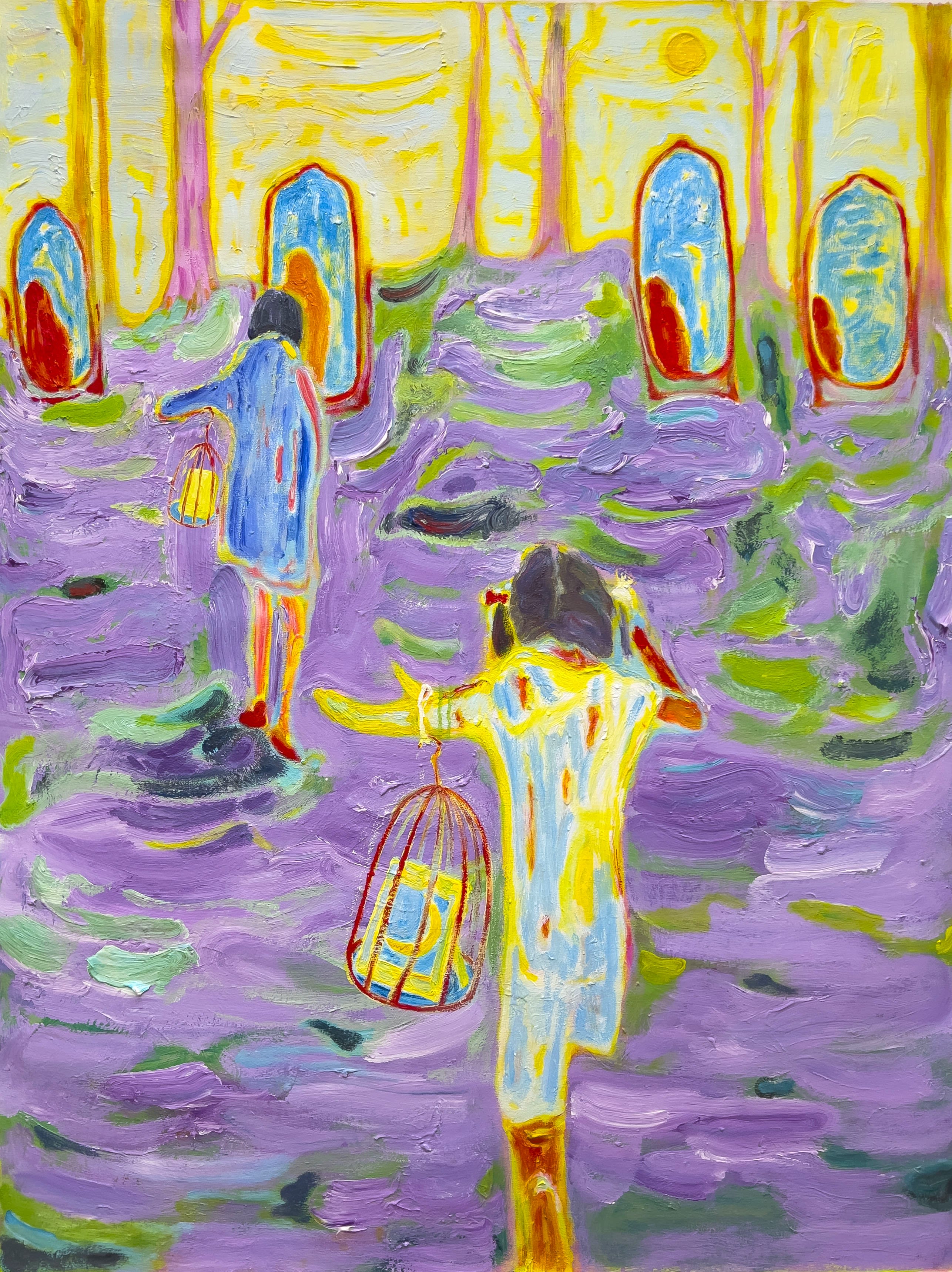
Having lived in both China and the United States, your work is a blend of Eastern and Western visuals and techniques. Who or what are some of your inspirations from both cultures?
As someone who has lived in both China and the United States, my work embodies a fusion of Eastern and Western visuals and techniques. The individuals and elements that have influenced my creative process have been ever-evolving, just like myself. In particular, non pictorial art forms have played a crucial role in shaping my artistic growth. I have always been intrigued by the possibilities of painting, and I find excitement in transforming non pictorial or even perceived as flawed elements into new painting languages and approaches. Overall, the following artists and works have had a significant impact on my artistic journey: Japanese director Takeshi Kitano and Hong Kong director Wong Kar-wai, German artist Käthe Kollwitz, contemporary Chinese novelist Shi Tiesheng, Taoist philosophy, Mahayana Buddhist philosophy, Australian musician Nick Cave, and American novelist Cormac McCarthy.

Can you describe your creative process? How do you visualize your compositions, color palettes and themes?
My creative process is constantly evolving, and I deliberately change my approach and methods periodically to avoid repetition, even in the simplest brushstrokes. On occasion, I challenge myself to complete a 60x72-inch artwork in just three hours, from initial sketch to finalization. However, many of my works take nearly five years to reach completion. Despite the seemingly uncomplicated nature of my recent pieces, my aim is to create an effortless illusion.
Over the past decade, I have dedicated considerable time to revisiting and revising my earlier works. This doesn't imply that my present self is superior to my past self. Rather, I perceive this process as a form of temporal dialogue—a collaboration with my past selves to create a finished piece. In fact, many of my past works contain elements that I cannot replicate now due to the inclusion of chance occurrences and unfamiliarity within them.
Regarding my color palettes and compositions, I have been particularly interested in the compositional and color choices found in various mediums, such as different electronic devices, over the past two years. I subtly incorporate these observations into my artwork, utilizing their duration as a source of inspiration.

You are a professor of painting and drawing at the University of Utah. Can you explain your teaching methods? Do you incorporate your personal techniques into your courses?
As a professor, my teaching methods prioritize fostering students' creativity and their ability to make artistic breakthroughs. I encourage each student to embrace their individuality, not only in terms of the surface aesthetics of their artwork but also in their unique understanding and interpretation of painting.
Occasionally, I provide simple demonstrations, but the purpose is to inspire their own creative ideas. I often remind my students that if their work resembles mine, they risk losing their distinctiveness. In a light-hearted manner, I express my preference for D- works over A+ ones. By D-, I do not mean students being lazy; instead, I encourage them to challenge conventional painting standards by proposing new painting logics and experiences based on their understanding of past works and their own experimentation.

